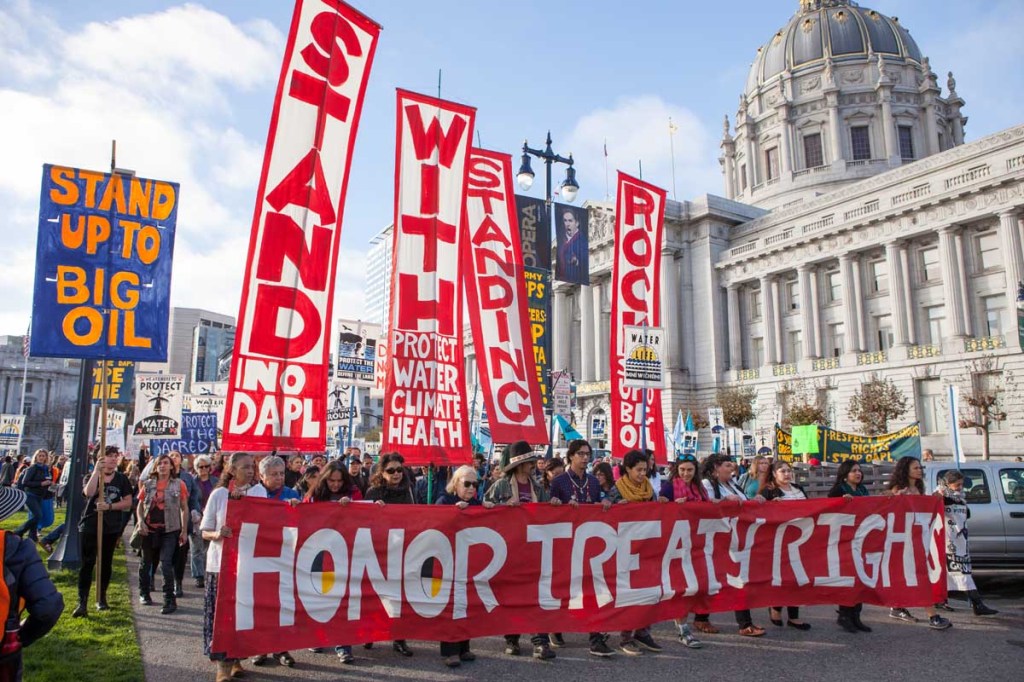American Indians to march on White House in rally for rights
Published 10:47 am Friday, March 10, 2017

- Demonstrators march through San Francisco in solidarity with the Standing Rock Sioux Reservation in November, 2016. For the first time after a year of protests at the pipeline site, American Indians are bringing their demands for civil rights, treaty rights and meaningful dialogue to Washington Friday with a morning rally and a march on the White House, where they will call on President Donald Trump to meet with Indian leaders. (Photo via Wikimedia Commons)
WASHINGTON – Following a year of mass protests at the Standing Rock Sioux reservation in North Dakota, American Indians are bringing their demands for civil rights, treaty rights and meaningful dialogue to Washington Friday with a morning rally and a march on the White House, where they will call on President Donald Trump to meet with Indian leaders.
The Native Nations Rise march is a culmination of four days of workshops, politicking and prayer in the nation’s capital by tribes from across the country. Organizers say it is intended as a show of solidarity against a federal government that has long shunted aside tribal concerns on a range of environmental, economic and social issues.
Trending
The gathering was led in part by the Standing Rock Sioux Tribe, which has been involved in a longstanding dispute over the Dakota Access pipeline. The tribe has argued in court that the 1,172-mile pipeline threatens its drinking water, crosses sacred lands and was approved by the government without adequate consultation.
As the pipeline battle played out last year in a remote section of one of the country’s least populated states, it was slow to gain national attention. But by mid-summer, Standing Rock’s struggle began to resonate with a growing coalition of Indians and environmentalists. The dispute soon galvanized hundreds of tribes to offer support and funding to the Standing Rock Sioux and it also helped propel a new wave of activism and engagement among Indians across the country.
Eryn Wise spent four months at Standing Rock last year, becoming one of the leaders of the International Indigenous Youth Council, a group formed at the protest site to give voice to the many young Indians who had traveled to join the movement.
“I think that most people came to Standing Rock for the same reason I did,” said Wise, 26, a member of the Jicarilla Apache and Laguna Pueblo tribes of New Mexico. “We’ve never been a part of a movement that represented us in such a powerful and important way. An indigenous-led resistance.”
Work on the $3.8 billion pipeline, which is owned by Texas-based Energy Transfer Partners, was halted in December by the Obama administration. The Army Corps of Engineers announced that it would look at alternate routes for the pipeline and that it would undertake an environmental impact statement.
But in January, Trump signed an executive order giving the pipeline project the go-ahead. The Army Corps granted an easement for the oil company to drill under a reservoir on the Missouri River that is adjacent to the Standing Rock Sioux reservation and construction resumed in early February. The company has said it would be just a number of weeks before up to 550,000 barrels of oil a day can begin flowing through the pipeline.
Trending
The Standing Rock Sioux and the Cheyenne River Sioux tribes have filed a joint lawsuit against the pipeline project in federal court. A judge’s ruling is expected later this month or in April.
For Wise, who arrived in Washington Thursday to take part in the protest, the pipeline’s approval doesn’t mean the battle is over.
“I want people to feel like we haven’t been defeated. My heart is broken but I am so deeply moved by everything we accomplished,” she said. “There is an ongoing threat to indigenous rights to our sacred lands and resources. But before Standing Rock, no one was having these conversations. We were able to be the catalyst for a greater movement, for a much needed conversation. We’re still here. We’re still fighting for our children’s futures. We’re still fighting for our territory.”





